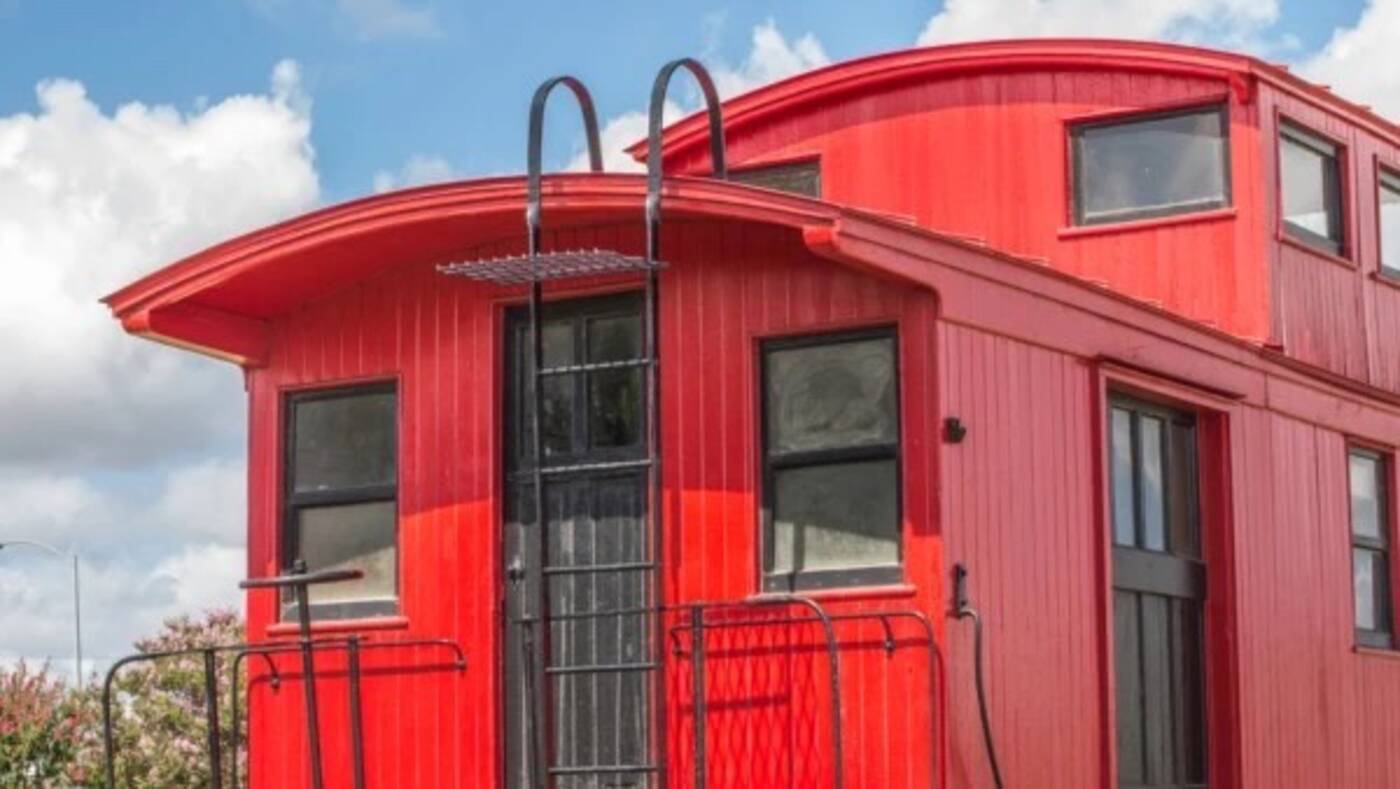
Here's why a train caboose turned into tiny home sits in limbo outside of Toronto
Although home prices across the GTA continue to decline in the region despite signs of rebound, home buyers craving a more minimalist and affordable lifestyle might be intrigued by the tiny home movement that's been all the rage as of late.
Tiny homes — as adorable as they are — actually come with many perks, including less clutter, a lower carbon footprint, and portability.
However, one detached mobile home near Toronto demonstrates some of the challenges and logistics that come with owning and maintaining a tiny house.
A train caboose located at 43 Main Street East in Campbellville, Ontario was known as the "cheapest home in the GTA" in 2022 after selling for just $45,000.

The exterior of the 111-year-old train caboose. Photo credit: Zoocasa.
The 250-square-foot caboose is a wooden car that originally served as an office for the conductor and crew at the end of a freight train. It was previously owned by the Canadian National Railway and dates all the way back to 1912.
Former teacher Laura Wynne purchased the mobile home last year, which was listed at a price cheaper than many cars and less than half the price of some parking spots in downtown Toronto.

The newly renovated caboose. Photo credit: Zoocasa.
Wynne has lots of experience renovating alternative housing, and one of her past projects includes refurbishing a 1921 former school house.
"It's hard to find a place that allows alternative housing. The tiny home movement is poised to take off amid the current rental and housing crisis. But people who want to do it are prevented from doing it because of zoning regulations," she told Zoocasa.

The home previously included limo-style seats and a mirrored ceiling, all of which have been removed by Wynne as part of the renovations. Photo credit: Zoocasa.
The caboose is still currently sitting in a lot near Milton while Wynne tries to find land for the miniature property.
Ever since she purchased the home last year, Wynne has made several upgrades to the caboose, including removing its mirror ceiling, pulling up the floors, and taking out its limo seats.

Photo credit: Zoocasa.
Despite some of its challenges, Wynne is adamant that she doesn't want to sell the home, and even envisions using the caboose as a recreational property one day.
Most tiny homes don't actually come with any property, although the home-buyer can lease the lot it sits on, usually on a month-to-month basis.
"For tiny homes, secure your land before you buy it," Wynne recommends. "And for people who can afford it, a tiny house built to code is the way to go. There are all kinds of cool options out there on the internet – treehouses and shipping containers – but they're just not allowed in most places."
Latest Videos
Latest Videos
Join the conversation Load comments







